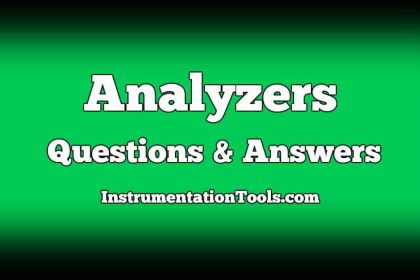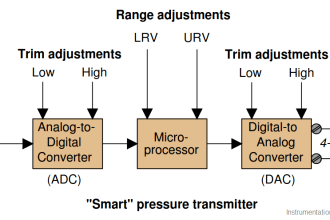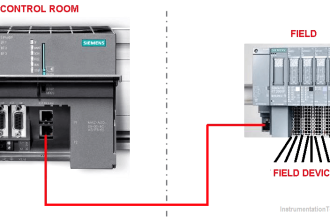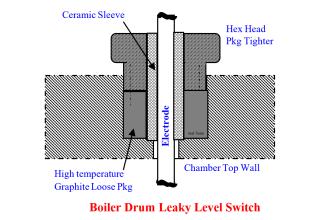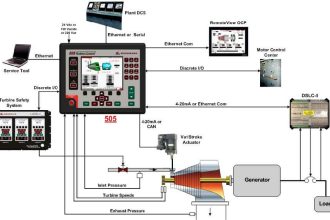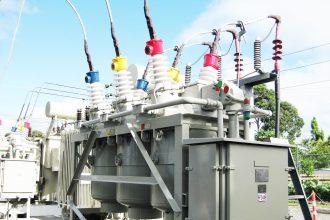Inductively Coupled Plasma Mass Spectrometer
1. ICP’s principle is similar to which of the following?
a) Flame emission spectroscopy
b) Fourier transforms spectroscopy
c) Atomic emission spectroscopy
d) Absorption spectroscopy
Answer: c
Explanation: ICP’s principle is similar to atomic emission spectroscopy. Samples are decomposed to neural elements in argon plasma in this method.
2. ICP is used to analyse samples in which of the following states?
a) Solids
b) Liquids
c) Gases
d) Solids and liquids
Answer: d
Explanation: ICP is used to analyse samples in both solid and liquid states. Atomic emission spectrometer is used to analyse only solid samples.
3. Solid samples are introduced into the ICP spectrometer using which of the following?
a) Nebulizer
b) Curvette having glass windows
c) Probe
d) Laser ablation system
Answer: d
Explanation: ICP spectrometer can be used for solid samples. They are introduced using laser ablation system.
4. Liquid samples are introduced into the ICP spectrometer using which of the following?
a) Nebulizer
b) Curvette having glass windows
c) Probe
d) Laser ablation system
Answer: a
Explanation: ICP spectrometer can be used for liquid samples. Aqueous samples are introduced using nebulizer.
5. Atomisation or ionisation occurs at which of the following conditions?
a) Vacuum pressure
b) Atmospheric pressure
c) Low pressure
d) High pressure
Answer: d
Explanation: Atomization or ionisation occurs at atmospheric pressure. The interface between the ICP and MS components are crucial in creating a vacuum.
6. Ions flow is pumped into the vacuum system using which of the following?
a) Orifice
b) Nozzle
c) Venturi meter
d) Dall tube
Answer: a
Explanation: Ions flow is pumped into the vacuum system using orifice. It expands in the vacuum system.
7. Which of the following is not the characteristic of ICP spectrometer?
a) Easy sample introduction
b) It can trace multiple elements
c) High detection limits
d) Accurate
Answer: c
Explanation: ICP spectrometer has low detection limits of mass spectrometer. It is capable of tracing multiple elements.
8. ICP spectrometer is a sequential multi-element analyser that has scan times less than ____ for one sweep.
a) 10ms
b) 20ms
c) 50ms
d) 100ms
Answer: b
Explanation: ICP spectrometer is a sequential multi-element analyser that has scan times less than 20ms for one sweep. Quadrupole mass analyser gives better unit mass resolution.
9. Double focussing section analysers offer better resolution than ICP spectrometry system.
a) True
b) False
Answer: a
Explanation: Double focussing section analysers offer better resolution than ICP spectrometry system. Their disadvantage is that they are large and have high capital cost.
10. The most common type of ion detector found in ICP system is which of the following?
a) Faraday cup collector
b) Channeltron
c) Micro-channel plate
d) Flame ionization detector
Answer: b
Explanation: The most common type of ion detector found in ICP system is channeltron electron multiplier. It is a cone or horn shaped tube.
11. Which of the following is the most accurate method of determination of elemental composition?
a) Spectroscopy
b) Isotope dilution
c) Isobar dilution
d) Chromatography
Answer: b
Explanation: The most accurate method of determination of elemental composition is isotope dilution. It permits calculation of concentration of an element.
12. Which of the following is the disadvantage of ICP mass spectroscopy?
a) Incapable of multi-element analysis
b) Less sensitivity
c) Impossible to obtain isotopic information
d) Not useful for detection of non-metals
Answer: d
Explanation: ICP mass spectroscopy has multi-element capability and high sensitivity. It is not capable of multi-element analysis.
13. The isobaric interference is not caused in which of the following elements?
a) Argon
b) Oxygen
c) Helium
d) Nitrogen
Answer: c
Explanation: The isobaric interference is not caused due to isotopes of helium. It is caused by isotopes of argon, oxygen and nitrogen.

